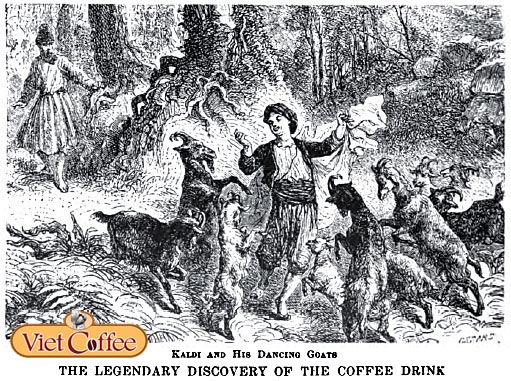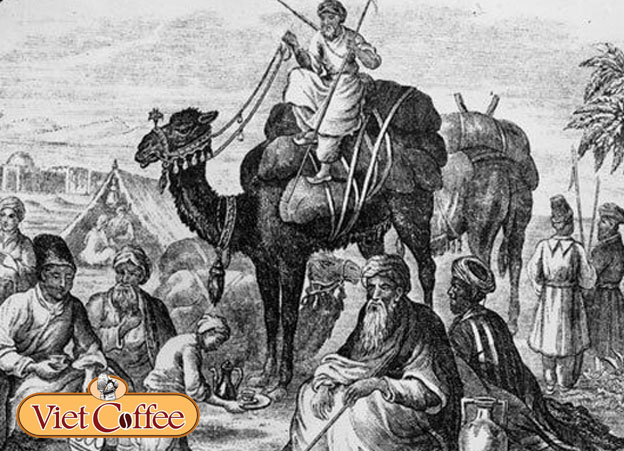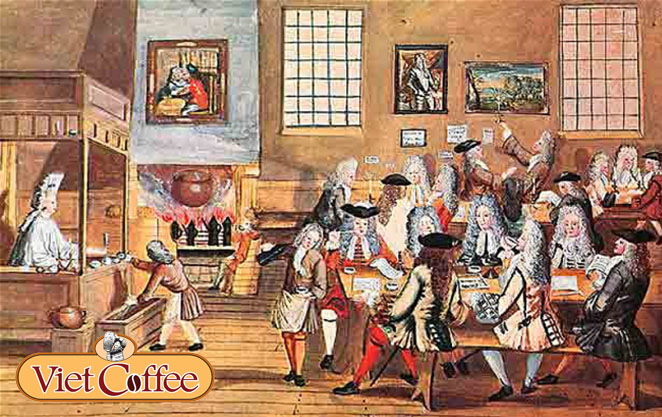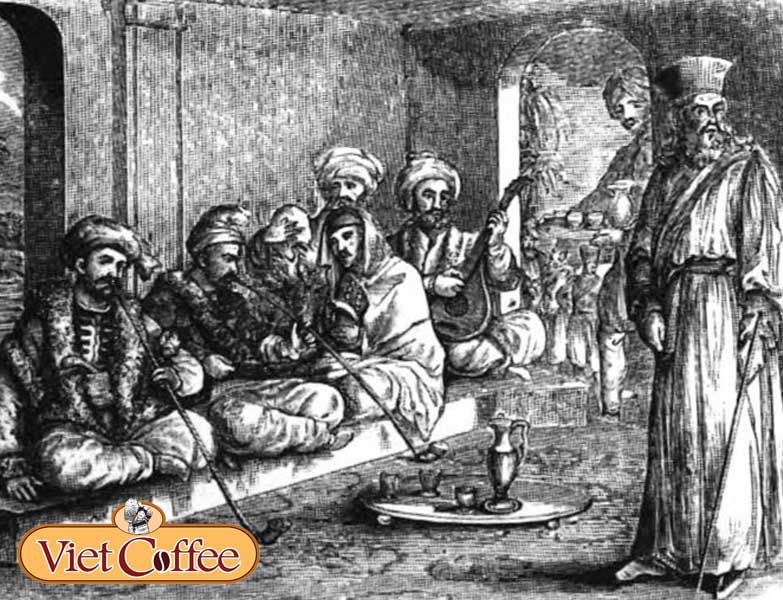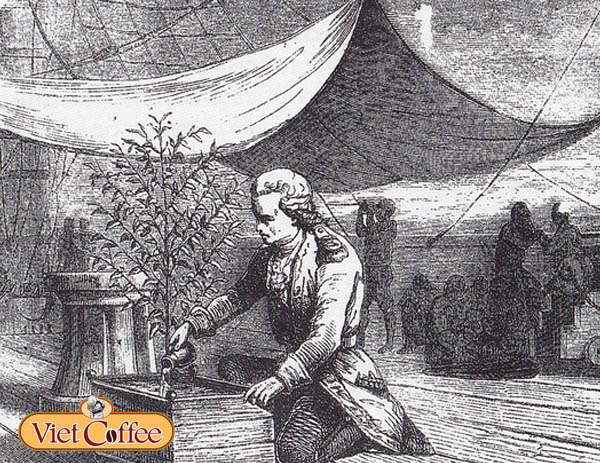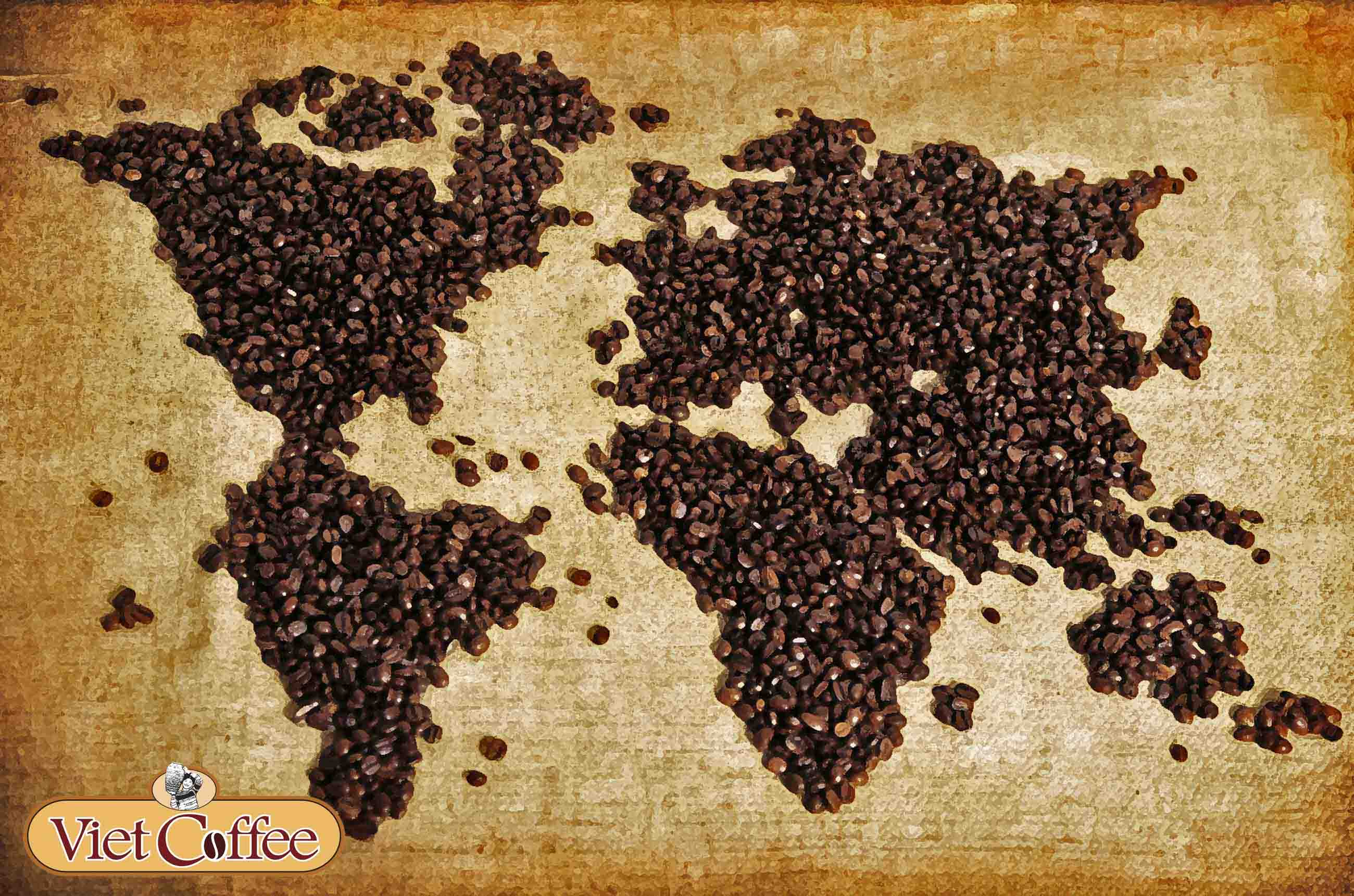HISTORY OF COFFEE
The story spring from the land where today is Ethiopia at East Africa.
There is also a romantic story about a shepherd named Kaldi, from the land of Abyssinia. One day while he was sitting on a rock next to a ridge, he suddenly realized his docile goats suddenly seemed strangely vivid. After taking a closer look, Kaldi saw that the goats had snapped reddish fruits from a tree. He recklessly plucked some to try and found himself more energized.
The shepherd thought he found a miracle, rushed to a nearby monastery and told the pastors. The priests were afraid that this could be a kind of forbidden fruit from the devil and immediately threw the red ripe fruit into the furnace. But when the seeds were burned, they emitted a fragrant smell. The priests believed that this was a gift of God so they took them out of the furnace and called the others. Then, they mixed the roasted seeds with water so that they all could enjoy.
Before the 10th century, the natives picked coffee and used it as a recreational drug. Ripe coffee was beaten and mixed with animal fat into balls to be used as food on a long trip. Eventually, coffee was used as a beverage, but not in the same form as it is today. Back then, people steeped the coffee fruit in water and drank it. It wasn’t until medieval times that the Arabs started to grind it and put it into boiling water.
That drink soon became famous and Arabs are very proud of this invention. They kept it as a secret for themselves. The pilgrims who drank coffee were secretly brought some seeds back home to plant. Soon, coffee appeared throughout the Middle East.
In the 13th century, coffee had become a traditional drink of the Arabs. Coffee shops called “qahveh khaneh” opened everywhere, from rural to urban. Those coffee shops became the social place, with all sorts of entertainment from music to gambling. Philosophers, politicians, and businessmen frequently gathered to discuss life and business.
But the bustling scene of these “nightclubs” also threatened the rulers. They feared that the opposition could gather to plan a coup. They then attempted to ban and close the coffee shops, but to no avail. In fact, the prohibition made coffee become a habit of civilians because more people began drinking coffee at home, which changed the way people drank coffee.
Merchants traveled to the Arab countries and Turkey to bring this habit back to their home. The Europeans started to drink coffee, and in 1615, the first coffee shipment was recorded in Venice sent from Turkey. When coffee was introduced to Rome, the priests condemned this drink because it was the drink of the devil. The dispute was so severe that Pope Clement VIII had requested a sample. Then, he realized how stupid it was to forbid people from enjoying coffee.
After it was approved by the Pope, the number of coffee drinkers immediately increased. Soon, the first cafe in Europe was launched in the UK in 1637 by a businessman named Jacob (Jewish, Turkish origin) in Oxford. Next, another cafe in London opened, followed by many more in London and other cities. People said that it was easy to notice the coffee shops because of the aromatic smell. Coffee shops during these days had a sign with a cup of coffee or a head of a king from the Middle East.
The coffee shops near universities were always crowded with professors and students, they were called by the fine name of “penny universities” taken from the price of a cup of coffee. There, people only spent one penny but collected a lot of knowledge through social discussion, even more than from reading books. These customs quickly spread across England, and to many countries, including Vietnam. The coffee shop is still a place where students come for recreation.
By the late 17th century, most of the coffee in the world was imported from Arab countries. Just as they put quota on oil now, the Middle East back then put coffee in strict protection. The coffee seeds could only be exported after being roasted so that no other country could cultivate coffee. Foreigners were also prohibited from coffee plantations.
After many failed attempts, the Dutch was the first nation to successfully steal coffee seeds to cultivate in Java (at the time, it was a Dutch colony). Thus, coffee plants had spread to Europe, though they can only be grown in a greenhouse.
While on vacation in 1723, a French naval officer named De Clieu decided to bring a young coffee plant to Martinique, where he was stationed. It was an arduous trip; a Dutch spy attempted to poison the seedlings, pirates were hijacking ships, and when approaching the destination, the boat almost sank during a storm.
Eventually, De Clieu was successful bringing in coffee seedlings and planted them in a secret place that was guarded by three sailors, day and night. They soon grew strong, and 50 years later, there were 18 million coffee plants on the island. There was fierce competition between the Netherlands and France over the coffee industry, and the dispute between the two countries led to an incident. While the two countries had unresolved disagreements, they had asked the Brazilian government to provide mediation.
In a meeting to discern between two sides, Brazil sent a young officer named Palheta. Palheta was handsome, clever and gallant noble man. In just a few days, he seduced the wife of the Guiana ambassador and asked her for coffee seeds “as a souvenir”. In the farewell gala dinner, she gave him a bouquet with a discreet cue. This led to start of coffee in Brazil and South American. Nowadays, South American countries are among the largest coffee exporter in the world.
In 1660, coffee was imported to North America in New Amsterdam by the Dutch. Four years later, the British occupied this area and named it New York. At that time, coffee had become a familiar drink at breakfast. The first coffee shop was also inspired from the coffee shops in London, which were like inns, with rooms for rent, providing meals, alcohol, chocolate and coffee. There was a common dining room for public activities, which gradually became the gathering place to discuss business.
At first, coffee was only for the elite while tea was more popular. But in 1773, when King George put a tax on tea imported from England, the Americans were angry, and the situation changed. Americans, disguised as Native Americans, attacked cargo ships and dumped tea into the sea. This historical event, which became known as the Boston Tea Party, made Americans choose coffee over tea, and soon, the drink became very popular.

